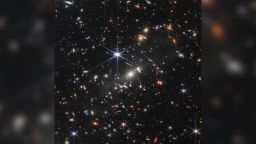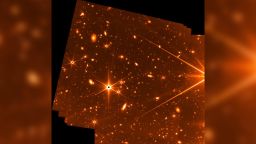Editor’s Note: Bill Nelson is NASA administrator and a former US senator from Florida. The views expressed in this commentary are his own. View more opinion on CNN.
On Monday, President Joe Biden and NASA revealed the deepest and sharpest infrared image of our universe that has ever been taken. It’s just one of the first full-color images captured by NASA’s James Webb Space Telescope – the largest space telescope ever built. More images will be released on Tuesday morning.

Put simply, Webb will give humanity a new view of space and fundamentally alter our understanding of the universe.
That’s not all. These images show Webb’s power in searching for the markers of life and habitability on other worlds. Its extreme sensitivity will help scientists understand some of the great open questions about how and why stars form, and it will bring into clarity stars and galaxies in a way we’ve never seen before. From new-forming stars to devouring black holes, this telescope will reveal all this and more.
Less than 100 years ago, we discovered that our Milky Way is just one of many throughout our universe. Today, Webb reveals an unprecedented understanding of the billions of galaxies that make up the cosmos.
Every image from Webb is a new discovery. And Webb’s ingenuity is a reminder of what’s possible when we work together for the benefit of humanity.
NASA shows we can unite and do big things. This telescope was developed over two decades under four presidential administrations – two Republicans and two Democrats.
As the former senior senator from Florida, I know the support Webb received from lawmakers on both sides of the aisle. It’s rare – seemingly impossible – to find an issue that brings people of different ideologies together these days. But humanity’s drive to discover does not belong to one political party. Rather, it’s a hallmark of the American story and a catalyst for unity.
As with all groundbreaking projects, there have been setbacks along the way. But nothing – not even the pandemic – could deter or defeat the Webb team. Thousands of scientists, engineers and other professionals from 29 states pushed the limits of what was once believed to be impossible.
The telescope successfully launched from French Guiana in December. This launch, one of NASA’s riskiest, was not like most missions. Webb had 344 so-called single-point failures. That means hundreds of steps required completion to ensure mission success over the course of a three-week journey of 1 million miles.
From the early days of its conception to the day it soared into the heavens, Webb had no shortage of skeptics. As we sat on the edge of our seats at NASA, I often thought about the thousands of innovators and pioneers who persevered through challenges and poured their passion into this project.
Today, their work is not only inspiring the world but demonstrating NASA’s commitment to partnering with space agencies from around the world. Webb is an international collaboration with the European Space Agency and Canadian Space Agency. The contributions of pioneers and innovators from more than 14 countries made this mission – and this moment – possible. Our discoveries in space will spur diplomacy on Earth.
Get our free weekly newsletter
Innovation such as the James Webb Space Telescope is exactly why NASA must always push the envelope of what is possible with a daring spirit. To introduce groundbreaking technologies that unlock the mysteries of our universe, NASA must remain bold. We must take calculated risks – because the risk is worth the reward.
On Monday, we saw the first light image from Webb, and there will be more released on Tuesday, starting at 10:30 a.m. ET. The promise this telescope holds for discovery is the result of the best of our humanity.





